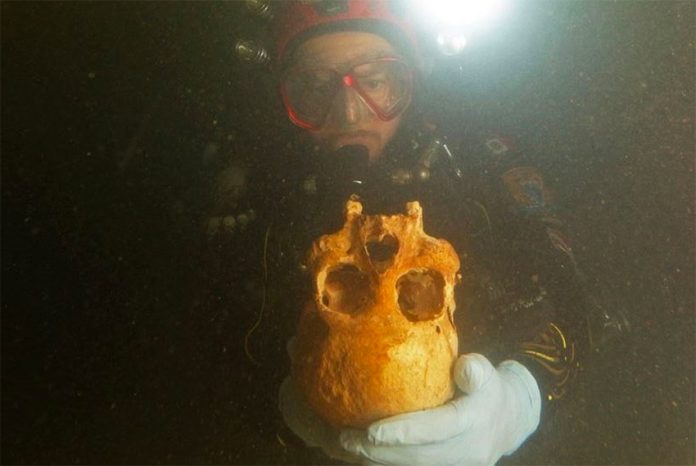A study published Wednesday provides new details about the 2016 discovery of the remains of a woman who lived on the Yucatán Peninsula at least 9,900 years ago.
Divers Vicente Fito and Ivan Hernández found the remains, including a deformed skull, in September 2016 while diving in the Chan Hol cave near Tulum, Quintana Roo. The woman was dubbed Chan Hol 3 because the ancient remains of two other people have been found in the same cave.
The study says that the skull of the woman – one of the earliest known inhabitants of the land that is now Mexico – showed signs of three different injuries, indicating that she was hit with something hard.
Deformations in the form of craters that appear consistent with lesions caused by a bacterial relative of syphilis were also found on the cranium.
“It really looks as if this woman had a very hard time and an extremely unhappy end of her life,” Wolfgang Stinnesbeck, the lead researcher of the study, told the science news website Live Science.

“Obviously, this is speculative, but given the traumas and the pathological deformations on her skull, it appears a likely scenario that she may have been expelled from her group and was killed in the cave, or was left in the cave to die there,” said the professor of biostratigraphy and paleoecology at the Institute for Earth Sciences at Heidelberg University in Germany.
While the woman’s skeleton is only about 30% complete, researchers have established that she was approximately 1.64 meters tall and about 30 years old when she died.
Dating the remains was challenging because her skeleton had no remaining collagen, leading researchers to look at uranium-thorium isotopes in a stalagmite that had become encrusted in the woman’s finger bones. The technique, which isn’t considered the most accurate for determining the age of human remains, enabled the formulation of a fairly reliable estimate about when the woman lived.
While the skull deformations have led researchers to believe that the woman had Treponema peritonitis, a disease related to syphilis, study co-researcher Samuel Rennie told Live Science that the possibility that the cranial irregularities were caused by erosion of the skull while in the cave could not be ruled out.
The researchers plan to carry out a CT scan on the skull to help them reach a more conclusive diagnosis about the lesions and trauma it presents, he said.
Rennie also said that Chan Hol 3 had a slightly longer and narrower brain case and face than other ancient people who lived in the land now known as Mexico.
That suggests that there were at least two different groups of humans living here at the end of the last ice age, he said.
“The two groups must have been very different in aspect and culture,” Stinnesbeck said.
“While the groups from central Mexico were tall, good hunters, with elaborate stone tools, the Yucatán people were small and delicate, and to date not a single stone tool was found.”
Source: Live Science (en)
